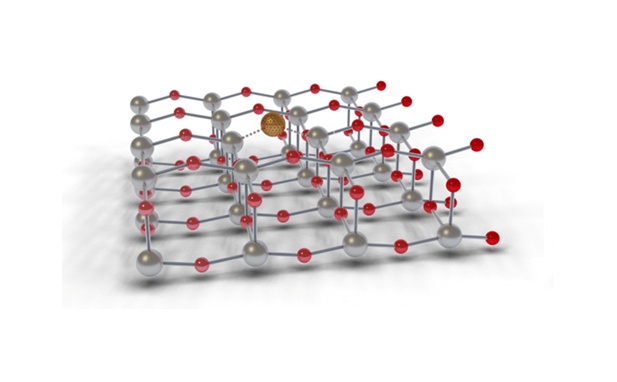Defects as chemical traps to anchor metal atoms—a way to a new generation of photocatalysts
Efficient and stable chemical anchoring of individual metal atoms for applications in catalytic and energy technologies represents one of the greatest challenges of contemporary materials research. CATRIN researchers have recently devoted themselves to developing new methods of metal binding in the form of single atoms and tuning the properties of the produced nanomaterials.
They use chemically modified graphene (e.g., Bakandritsos et al. Adv. Mater. 31, 1900323, 2019; Kadam et al. Small 17, 2006477, 2021) and carbon nitride (e.g., Zuo et al. ACS Nano 15, 7790-7798, 2021; Sharma et al. Small 17, 200647, 2021) as suitable surfaces primarily for applications in heterogeneous catalysis and electrocatalysis. The Photoelectrochemical group at CATRIN, led by Patrik Schmuki, aims to increase the efficiency of traditional photocatalysts by incorporating noble metals into sophistically created defects in the titanium dioxide structure (Hejazi et al. Adv. Mater. 32, 1908505, 2020).
In a recent paper published in the journal Advanced Functional Materials, a team of scientists from CATRIN and Erlangen, Germany, showed new possibilities for creating defects in the TiO2 structure through a high degree of stress during the thermal crystallization of titanium dioxide nanotubes. In the resulting defects, a kind of chemical traps, titanium atoms show reduced charge due to oxygen vacancies in their surroundings. These surface defects can very effectively anchor iridium atoms, resulting in a significant increase in the efficiency of photocatalytic water splitting at a very low iridium concentration (below 0.5 %at). The work confirms the huge application potential of surface engineering at the level of single atoms for the development of new types of (photo) catalysts applicable in a number of areas including energy, pharmacy, or the chemical industry. 


